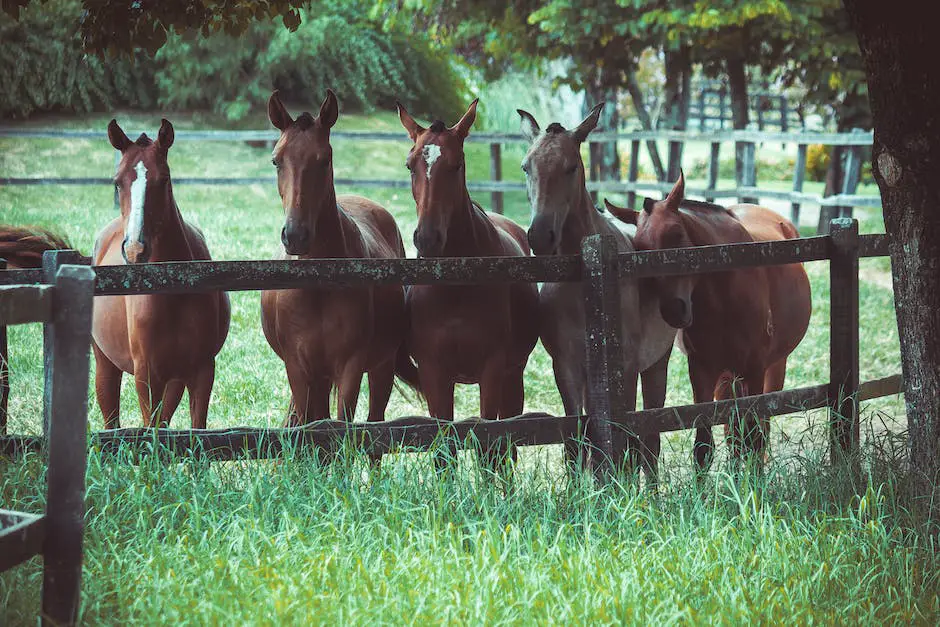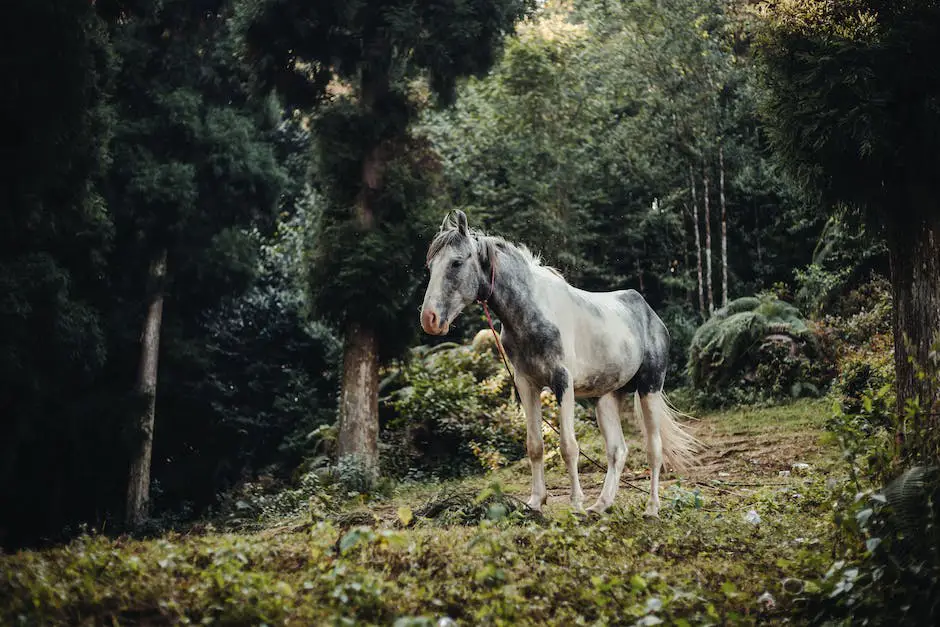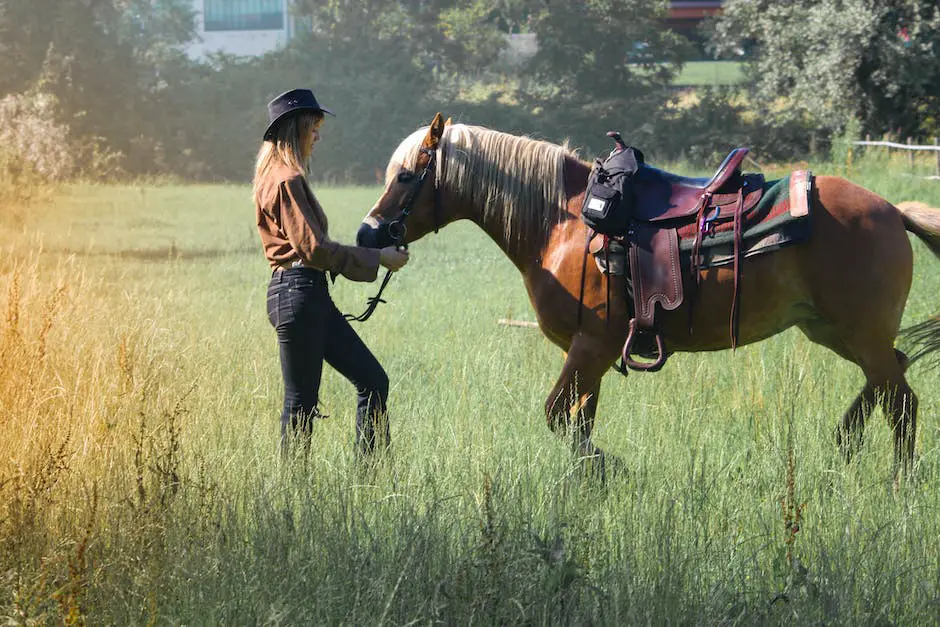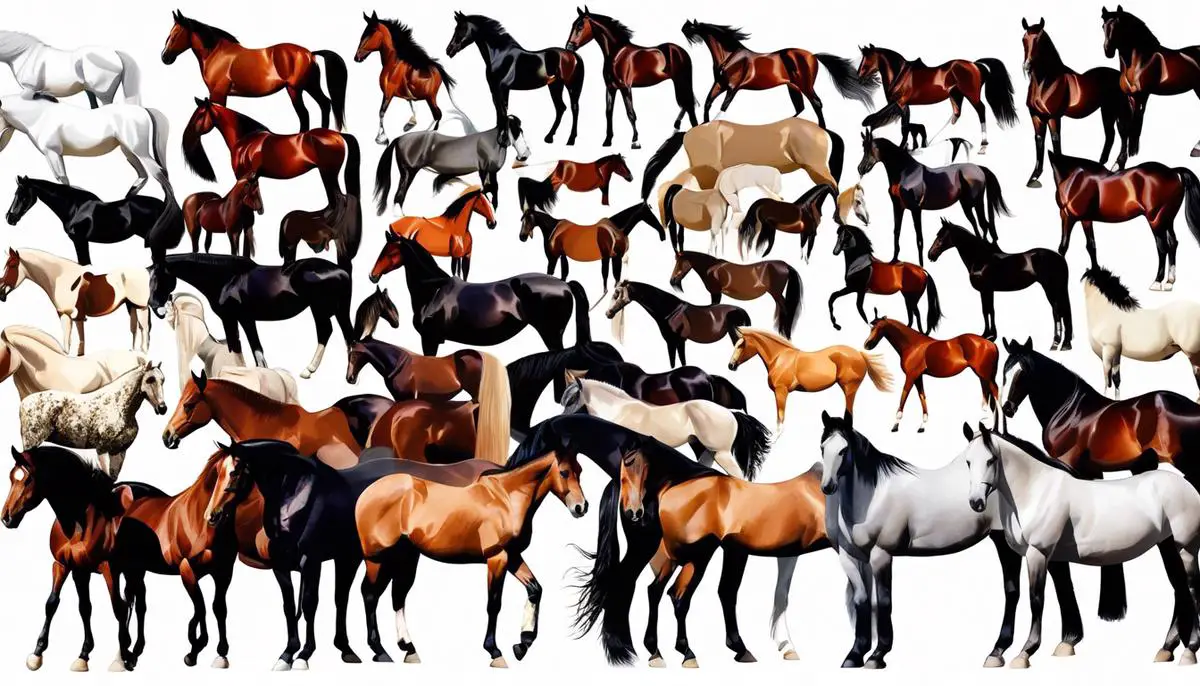Switzerland, with its majestic landscapes and rich cultural heritage, is also the home to an array of horse breeds known for their resilience and distinct characteristics. The study of Swiss horse genetics provides not only a window into the legacy of these majestic animals but also serves as a cornerstone for ensuring their future. In exploring the tapestry of genetic diversity and population structure, we employ advanced molecular tools to unveil the remarkable intricacies within this equine population. From the rippling muscles of the Freiberger to the steadfast sturdiness of the Haflinger, an understanding of breed-specific genetic traits and adaptations emerges, crucial for those who seek to preserve, perfect, and protect these formidable companions.
Table of Contents (Horspedia)
Genetic Diversity and Population Structure
Genetic Heterogeneity within Equus Caballus: Insights from Swiss Horse Populations
Genetic diversity is a cornerstone of evolutionary vitality, underpinning the ability of populations to adapt, survive, and flourish amidst the challenges posited by ever-changing environments. In examining Equus caballus, specifically within the context of Swiss horse populations, one observes a microcosm of genetic variety, shaped by centuries of selective breeding, geographic isolation, and conservation efforts. This article endeavors to elucidate the multifaceted expressions of genetic diversity among equine breeds in Switzerland and its implications for equine science and biodiversity.
Switzerland is home to several indigenous horse breeds, most notably the Franches-Montagnes, the only horse breed developed within Swiss borders. Despite the intimate association with Swiss culture and agriculture, the population size remains modest. This modesty in numbers necessitates rigorous genetic management strategies to mitigate deleterious effects of inbreeding and to maintain genetic diversity.
Research has identified several key alleles within Swiss horse populations that underscore a rich inheritance. Genetic screenings, including mitochondrial DNA analyses and genome-wide association studies, have revealed alleles that contribute to phenotypic traits endemic to Swiss breeds, such as coat colors, muscle composition, and even behavioral propensities. Indeed, the genetic signatures of Swiss horses are as diverse as the tapestry of breeds themselves, with a harmonious blend of ancestral and modern DNA sequences that attest to both historical migrations and recent breeding practices.
The Franches-Montagnes, in particular, demonstrates a broader genetic base compared to other European breeds, likely attributed to historical policies that favored the importation of diverse stallions to enhance the breed’s characteristics. Selective breeding practices have aimed to preserve desirable traits, such as docility and robustness, while also attending to the genetic health of the population. This is reflected in current research focusing on the optimization of genetic variation while avoiding the pitfalls of inbreeding depression, which can have detrimental effects on population viability.
Further adding to the complexity, genetic drift in smaller populations—often the case in the secluded and topographically challenging Swiss regions—can cause a random fluctuation in allele frequencies, affecting genetic diversity over generations. Thus, efforts to catalogue the genetic makeup of these populations take on greater imperative. Biobanks have been established to archive genetic material, ensuring that a repository of genetic data is available for ongoing and future research, critical for informed breeding and conservation decisions.
Conservationists and geneticists collaborate closely, often resorting to modern techniques such as the creation of comprehensive genetic profiles for each breed. These profiles not solely elucidate the existing levels of heterozygosity and homozygosity but also pave ways to guide effective breeding programs to sustain genetic diversity.
Ultimately, the study of genetic diversity in Swiss horse populations provides an invaluable reference not only for the preservation of these national treasures but also for the broader fields of evolutionary biology, conservation genetics, and animal breeding science. The insights garnered from these endeavors may prove instrumental in shaping communal standards for the genetic management of domesticated animal populations worldwide. It is the intersection of genetic science, heritage, and foresight that will ensure that the legacy of Swiss equines persists through the ages, contributing to the overall resilience and sustainability of global biodiversity.

Breed-Specific Genetic Traits and Adaptations
Unique Genetic Traits of Swiss Horse Breeds: Insights on Adaptability and Performance
Swiss horse breeds, particularly those developed in isolated environments such as the Swiss Alps, embody a unique set of genetic traits that cater to their adaptability, performance, and robustness to cold climates. The distinctive genetic makeup of these equine populations can be attributed to natural and anthropogenic selection pressures that have shaped their genomes over centuries.
One of the distinctive genetic traits found in Swiss horse breeds is the presence of specific allelic variations contributing to their renowned cold tolerance and hardiness. These breeds, including the Franches-Montagnes, possess genetic adaptations that allow them to thrive in harsh alpine conditions where temperatures plummet and resources are scarce for significant portions of the year. Genetic variants associated with efficient fat metabolism for energy conservation and the development of a dense hair coat for insulation against frigid temperatures are more prevalent among these breeds relative to their lowland counterparts.
Moreover, a suite of genetic traits is associated with enhanced musculoskeletal strength, which is essential for navigating mountainous terrain. Certain loci identified in Swiss breeds are associated with increased bone density and muscle composition that offer critical advantages in topographies that demand endurance and agility. Over generations, these physical traits have become more prolific within the gene pool of Swiss breeds due to the necessity for labor-intensive activities such as farming and transportation in alpine regions.
Swiss horse breeds have also been found to have unique genetic traits associated with respiratory efficiency, which is critical in the high-altitude, lower-oxygen environments of the Swiss Alps. The selective pressures of hypoxic conditions have likely shaped the equine genome, allowing these animals to sustain physical activity despite the challenges posed by their environment. Variations within genes affecting blood oxygenation and circulation have been noted, which may underpin this physiological adaptability.
Furthermore, an interesting phenomenon observed in Swiss horse breeds is the genetic basis for their even temperament and behavioral adaptability. Specific gene variants modulating neurotransmitter pathways have been linked to a calm and trainable demeanor in these equines, making them well-suited to a variety of roles from recreational riding to agricultural work where reliability and temperament are as important as physical traits.
Additionally, Swiss horse breeds have developed a wealth of genetic diversity connected to their coat color and patterns. The intricate interplay between various alleles results in a wide array of phenotypes that are not merely aesthetic but can also provide functional advantage. For instance, lighter colored coats reflect sunlight, contributing to thermal regulation in snow-covered environments, whereas darker colors can be beneficial for heat absorption in colder climates.
In conclusion, the unique genetic traits of Swiss horse breeds underscore the intricate relationship between the equine genome and the environment. These traits result from a long history of adaptation and human-led selection, sculpting the genetic landscape to bring forth resilient and capable breeds tailored to the demands of the Swiss terrain and climate. This understanding delineates the richness of genetic architecture, which has practical implications for breed preservation, animal husbandry, and bio-conservation efforts, while also contributing to our broader comprehension of genetic adaptation and evolution.

Conservation Genetics and Endangered Breeds
The Role of Genetics in the Conservation of Swiss Horse Breeds: Adaptations and Practical Applications
Genetics serves as the blueprint for biological adaptation. In the realm of equine conservation, the genetic underpinnings of Swiss horse breeds are of paramount importance. These equids exhibit a suite of genetic adaptations that confer survival advantages in the challenging Alpine environments, which, in turn, are pivotal considerations for conservation and breeding strategies.
Cold tolerance and hardiness, for instance, are not accidental traits but the results of evolutionary pressures sculpting the horse breeds over millennia. The genetic constitution of these breeds, such as the Swiss Freiberger, have evolved to enable them to conserve energy and provide efficient insulation against frigid temperatures. This is achieved through a thrifty metabolism and a dense coat that varies seasonally, offering insights into the functional genomic regions responsible for thermoregulation.
The enhanced musculoskeletal strength of these breeds is another manifest of genetic aptitude. It facilitates their navigation across the demanding, mountainous terrains of their native topography. The resulting phenotypic traits such as robust hooves, powerful hindquarters, and overall muscular build have a complex genetic basis that ensures endurance and stability on uneven grounds.
Furthermore, the high-altitude environments of the Swiss Alps exert selective pressures on the physiology of these horses. Genetic analysis reveals variants associated with respiratory efficiency, which enable horses to maximize oxygen uptake in low-oxygen environments. These genetic traits are not only beneficial for the horses’ well-being but are also invaluable for altitudinal farmers who depend on these animals for work.
Behavior is another facet where genetics exerts significant influence. A calm and even temperament is an asset in harsh living conditions, and behavioral adaptability has a strong genetic component. Identifying genes linked with desirable demeanor traits enhances the welfare and manageability of these equines.
Exploring the colorful tapestry of coat colors and patterns in Swiss breeds reveals an interesting correlation between genetic diversity and functional advantages. For example, certain colors and patterns may confer camouflage in specific environments or play roles in thermoregulation and social signaling.
The intricate relationship between the equine genome and the environment is evident through the study of these Swiss breeds. These genetic attributes are a testament to the evolutionary marvel and bear practical implications for breed preservation. They help refine animal husbandry practices, improving the health, efficiency, and longevity of these equine populations.
Lastly, the contributions to our understanding of genetic adaptation and evolution through the lens of these Swiss horse breeds cannot be overstated. such studies inform a broader understanding of how genomes shape organisms to thrive in diverse ecological niches, providing robust evidence in support of evolutionary theories and informing conservation efforts for other species facing similar environmental challenges.
In sum, genetics plays an indispensable role in delineating the traits that render Swiss horse breeds adept at surmounting the obstacles posed by their unique homeland. It provides a scientific foundation upon which conservation mechanisms are constructed, ensuring the perpetuity of these equine treasures.

Disease Susceptibility and Hereditary Disorders
Genetic Disorders in Swiss Horse Breeds: Prevalence and Management Strategies
Swiss equines, resilient and steadfast, boast a remarkable adaptation to the rigorous alpine environment that has shaped their evolution. However, concomitant with these adaptive traits are specific genetic disorders that prevail among Swiss horse breeds, demanding a scientific approach to management.
One such disorder is the condition known as Osteochondrosis, a developmental disease affecting the cartilage and bones of the joints, particularly in growing horses. This ailment is characterized by the abnormal differentiation and ossification of cartilage, leading to a wide array of clinical manifestations, including lameness. The prevalence of Osteochondrosis in Swiss breeds, especially in the larger boned horses like the Franches-Montagnes, necessitates a vigilance in breeding programs. Genetic markers for this disease are still under investigation, but research indicates a multifactorial inheritance pattern, implicating diet, growth rate, and genetics.
Equine Recurrent Uveitis (ERU) is another disorder that remains a concern, marked by repeated episodes of inflammation in the uveal tract of the horse’s eye. This condition, which can lead to blindness, has a hereditary predisposition in certain Swiss horse breeds. The exact etiology is complex, and while genetic markers have not been definitively identified, a correlation with the Major Histocompatibility Complex (MHC) has been suggested. Breeding strategies now earnestly aim to reduce the incidence by carefully selecting against traits associated with this disorder.
Polysaccharide Storage Myopathy (PSSM) also deserves mention for its incidence in Swiss breeds, where it results in an abnormal accumulation of glycogen in muscle cells. PSSM causes various clinical signs, ranging from muscle stiffness to severe episodes of pain and lameness. The condition is attributable to a mutation in the gene encoding glycogen synthase (GYS1), presenting a direct avenue for genetic testing and informed breeding decisions.
Beyond these named disorders, a spectrum of additional genetic conditions is being elucidated through continuous genetic research. Advances in genomics have begun to allow for the development of advanced screening tests, enabling breeders to identify carriers of deleterious genes with greater accuracy. This cutting-edge science informs selection strategies designed to systematically excise genetic anomalies from the breeding pool, without compromising on the genetic diversity that is paramount for population health.
Genetic counseling programs have been established within the Swiss horse community to provide guidance based on the latest scientific findings. These programs consolidate data from genetic testing, pedigrees, and phenotypic evaluations to offer recommendations on mate selections. The effective deployment of such counseling is the cornerstone of preventing the propagation of genetic diseases and the cornerstone of breed stewardship.
Environmental adaptations, while generally advantageous, also warrant close scrutiny to ensure they do not hide susceptibility to genetic ailments. This interwoven complexity between adaptation and maladaptation is at the forefront of genetic research and has broad implications that transcend species lines. Beyond preserving the integrity of Swiss horse breeds, these management strategies provide a blueprint for sustainable stewardship that can be replicated in other species facing similar genetic conservation challenges.
In summation, the stewardship of Swiss horse breeds embodies a meticulous balance—nurturing the traits that herald their strength and endurance, while vigilantly managing the genetic disorders that shadow their health. A concerted effort embracing the scope of veterinary science, genomics, and population genetics is pivotal in safeguarding these noble creatures for future generations. Through such endeavors, we not only protect the legacy of Swiss equine culture but also deepen our overall comprehension of genetics in the larger tapestry of biodiversity.

Through the lens of genetics, we’ve embarked on a journey that traverses the richness of Swiss equine heritage and confronts the challenges lying ahead. By scrutinizing disease susceptibility and hereditary disorders, our ability to safeguard the health and vitality of these breeds has been markedly enhanced. As the equestrian community and scientific world alike continue to collaborate, the tools and knowledge forged from these studies stand as a testament to our dedication. It is with this unwavering commitment that we embrace the noble endeavor of assuring that Swiss horse breeds not only survive but thrive, serving as enduring symbols of beauty and strength in the animal kingdom.

